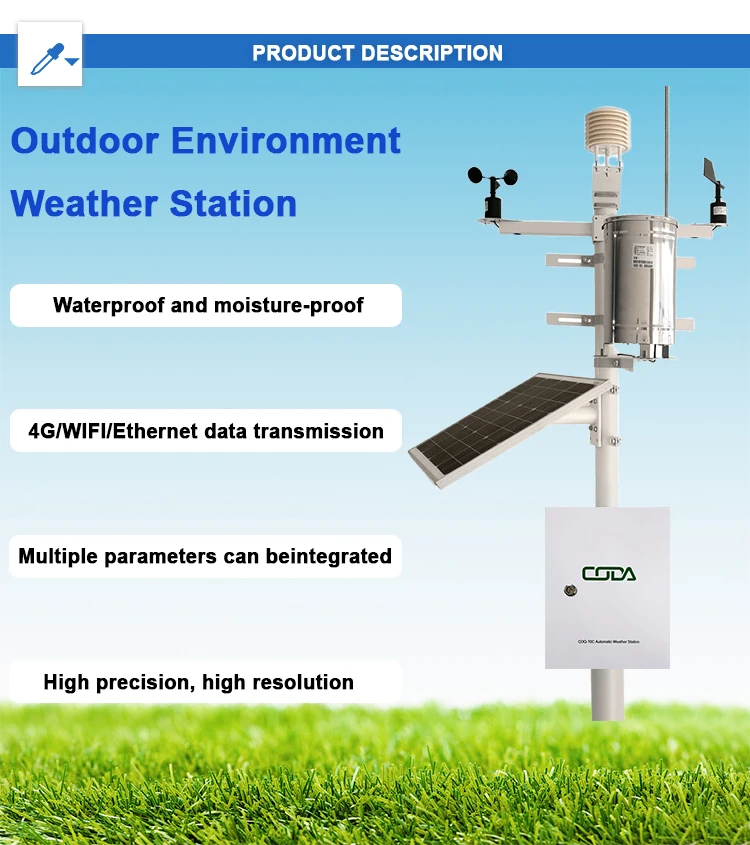
# Automatic Weather Station: Definition and Functionality
## What is an Automatic Weather Station?
An Automatic Weather Station (AWS) is a system designed to automatically collect and transmit meteorological data without human intervention. These stations are equipped with various sensors that measure atmospheric conditions such as temperature, humidity, wind speed and direction, rainfall, solar radiation, and barometric pressure.
AWS units have become essential tools for meteorologists, agricultural professionals, researchers, and various industries that rely on accurate weather data. They provide continuous, real-time measurements that help in weather forecasting, climate monitoring, and decision-making processes.
## Key Components of an Automatic Weather Station
A typical AWS consists of several important components:
– Sensors: These measure various atmospheric parameters
– Data logger: Records and stores the collected measurements
– Power supply: Usually solar panels with battery backup
– Communication system: Transmits data to a central location
– Mounting structure: Supports the equipment at an appropriate height
## How Automatic Weather Stations Function
The functionality of an AWS can be broken down into several key processes:
### 1. Data Collection
Sensors continuously monitor environmental conditions. Modern AWS units can measure:
– Air temperature (typically at 2 meters height)
– Relative humidity
– Atmospheric pressure
– Wind speed and direction (at 10 meters height)
– Precipitation amount and intensity
– Solar radiation
– Soil temperature and moisture (in agricultural stations)
### 2. Data Processing
The data logger processes raw sensor data, converting electrical signals into meaningful meteorological values. It applies necessary calibrations and quality checks to ensure data accuracy.
### 3. Data Transmission
Processed data is transmitted at regular intervals (often every 10-60 minutes) via:
– Cellular networks (GSM/GPRS)
– Satellite communication
– Radio transmission
– Wired connections (in some installations)
### 4. Data Storage and Distribution
The central receiving system stores the data in databases and makes it available to users through various platforms, including:
– Weather websites and apps
– Government meteorological services
– Agricultural management systems
– Research databases
## Applications of Automatic Weather Stations
AWS technology serves numerous important applications:
### Weather Forecasting
Meteorological agencies use data from AWS networks to improve forecast accuracy, especially for severe weather warnings.
### Agriculture
Farmers rely on AWS data for irrigation scheduling, frost protection, and optimal planting/harvesting times.
### Aviation
Airports use AWS to monitor conditions critical for flight operations and safety.
### Climate Research
Scientists analyze long-term AWS data to study climate patterns and changes.
### Renewable Energy
Wind and solar farms use AWS data to optimize energy production and predict output.
## Advantages of Automatic Weather Stations
Compared to traditional manual weather stations, AWS offer several benefits:
– Continuous, real-time data collection
– Reduced human error in measurements
– Ability to operate in remote locations
– Lower long-term operational costs
– Faster data availability for decision-making
– Standardized measurements across locations
## Challenges and Considerations
While highly beneficial, AWS implementation comes with some challenges:
– Initial setup costs can be significant
– Requires regular maintenance and calibration
– Vulnerable to extreme weather conditions
– Needs reliable power and communication infrastructure
– Data quality control is essential
## Future Developments in AWS Technology
The field of automatic weather monitoring continues to evolve with:
– Miniaturization of sensors
– Improved energy efficiency
– Advanced data analytics capabilities
– Integration with IoT networks
– Enhanced machine learning applications for data interpretation
As technology advances, automatic weather stations are becoming more accurate, affordable, and widely deployed, contributing significantly to our understanding of weather patterns and climate dynamics.
Keyword: what is automatic weather station